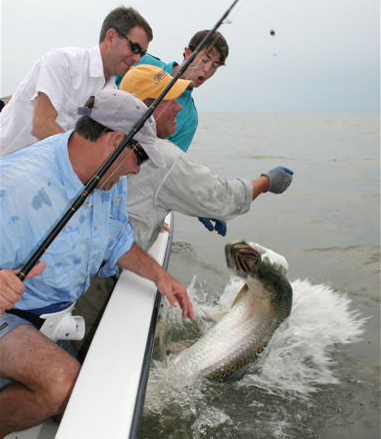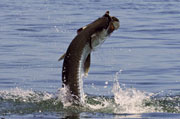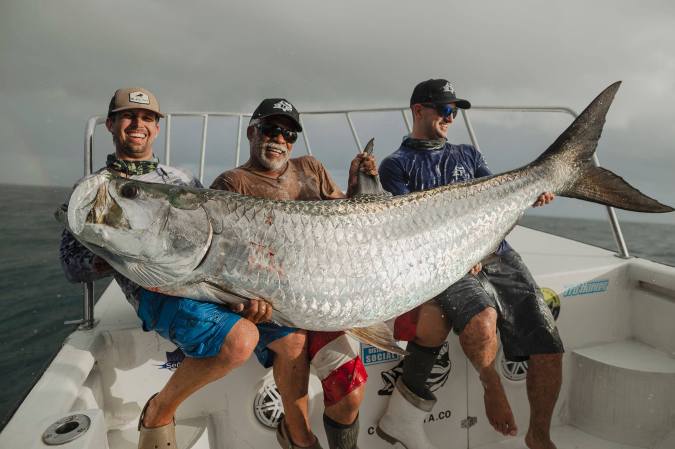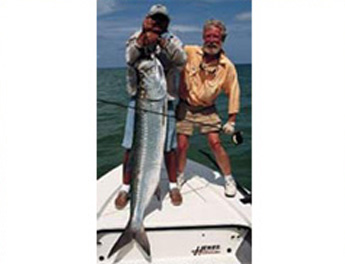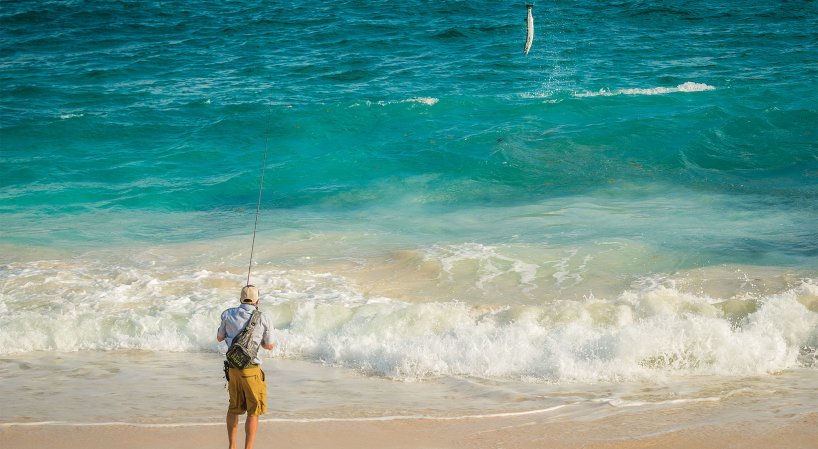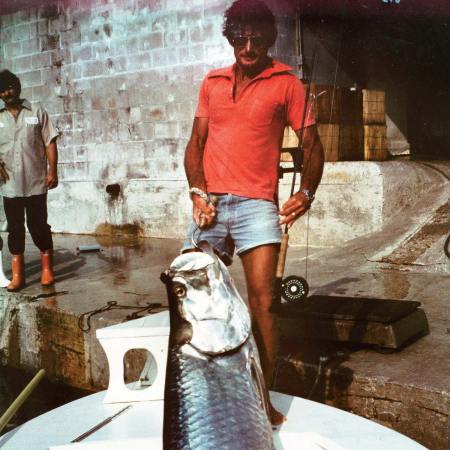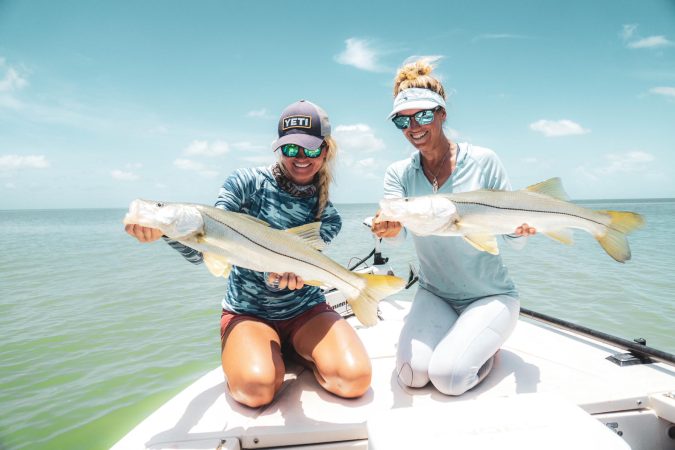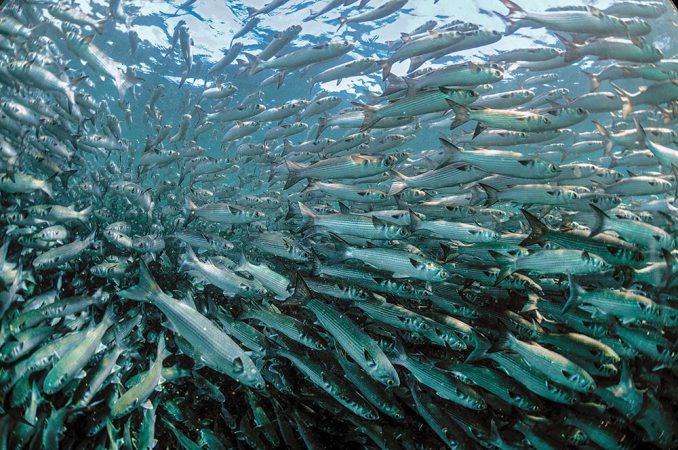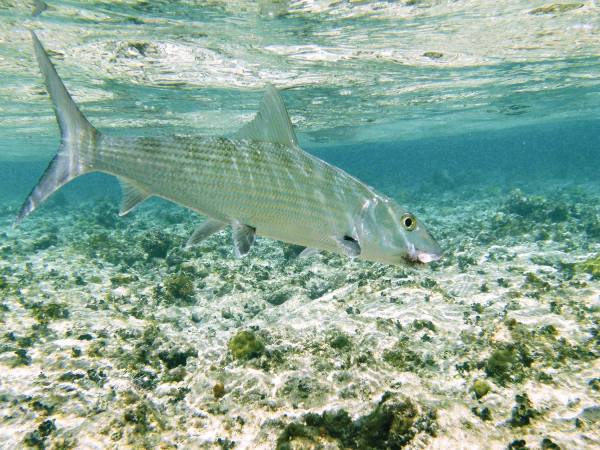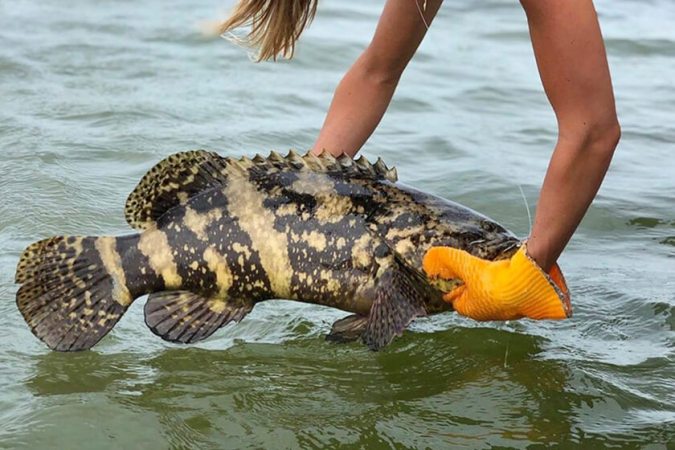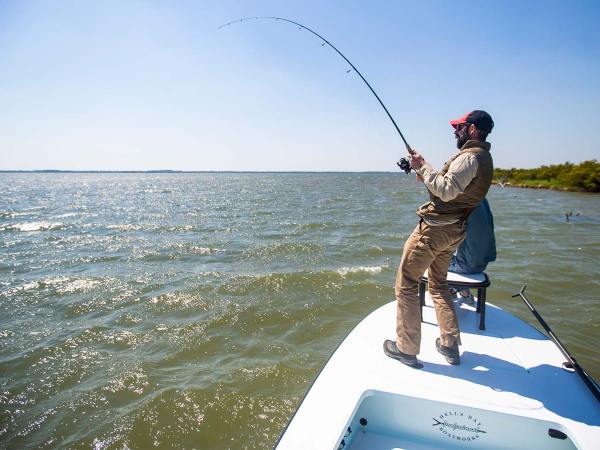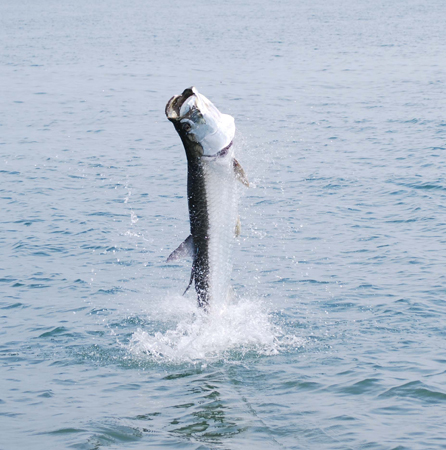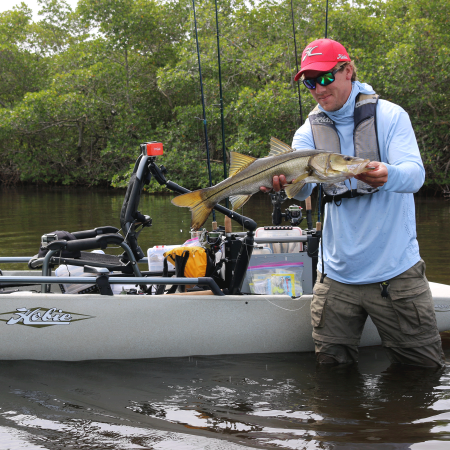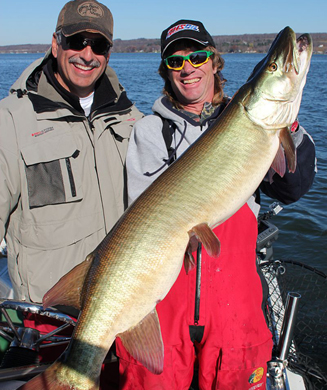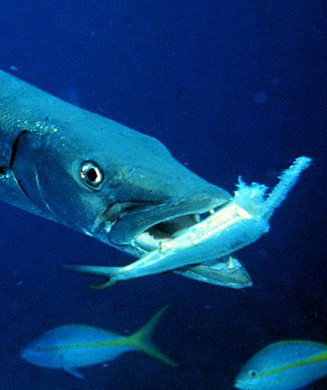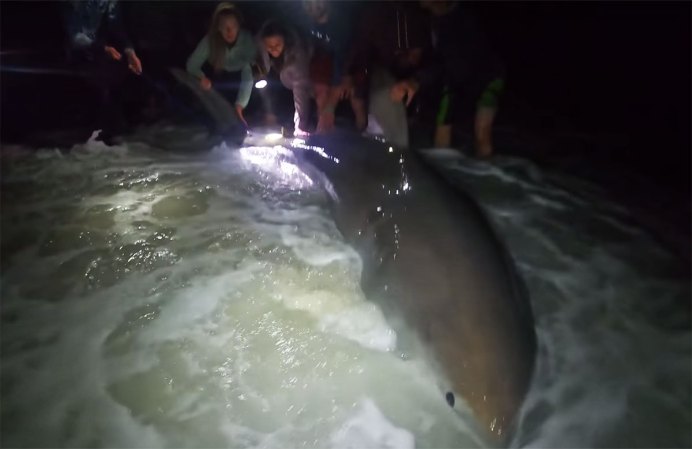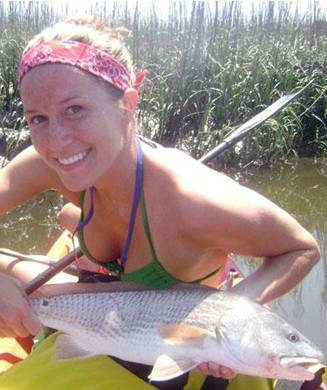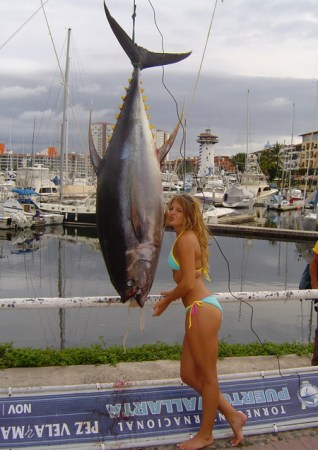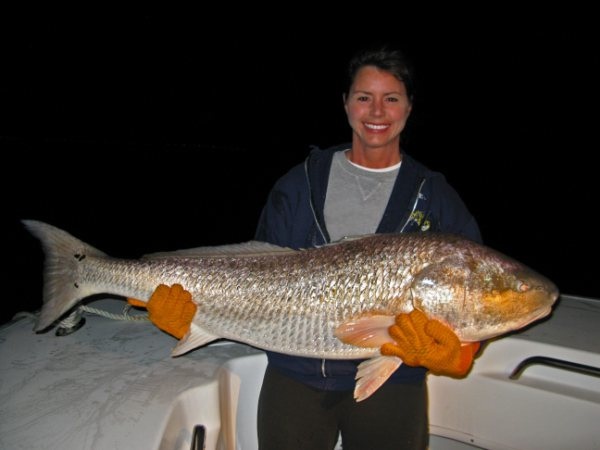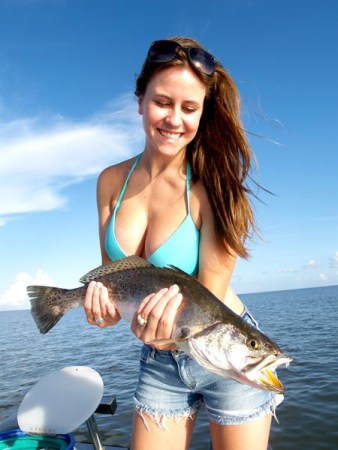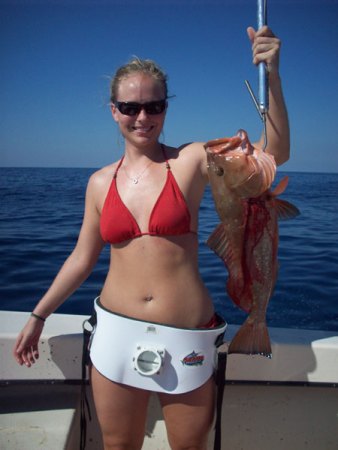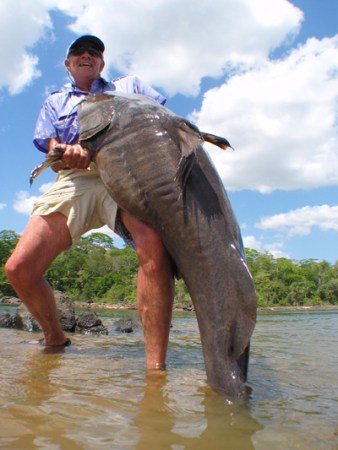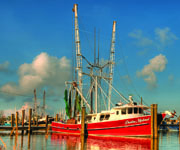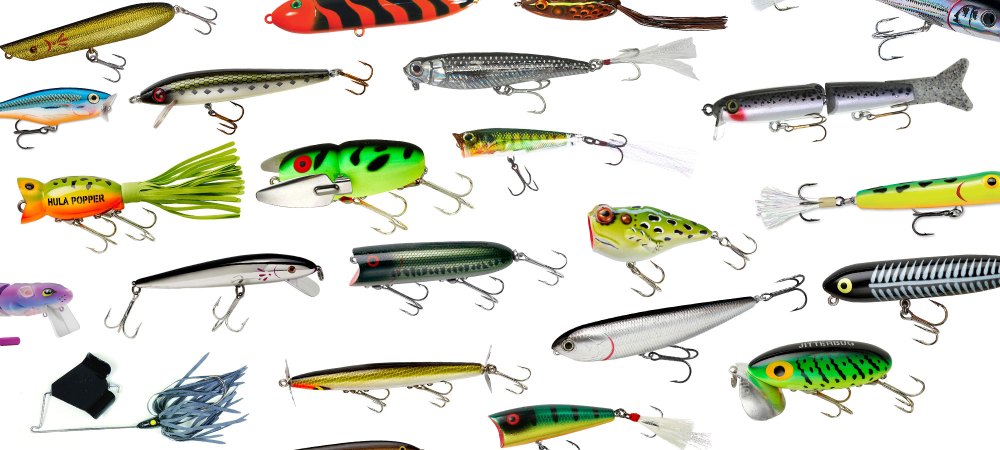They come ghosting up from deep water that fades into pale green and rolls gently without wind. You notice their big eyes, their jutting, thug jaws, their silver-dollar scales and, most of all, their size. They’re tarpon so big that your knees quake and your eyes burn from a sudden flood of sunscreen and sweat. But you make the good cast. The fly of splayed grizzly hackles from an evil rooster now swims just ahead of Big-Eye’s face. He eats and you do the line-strike thing right and then you’re on, fish in the air broadside like an NFL linebacker dead-set on sacking you. And the funny thing is, you didn’t even sign up for this.
The trip was to be a hunt for bonefish, but these inshore waters are haunted by the big three of light tackle–bones, permit and tarpon. Where the big three swim, anything’s possible. If you’re willing to try fishing in a shoulder season, it doesn’t matter if your next trip is to Florida, the Bahamas, Belize, Mexico or Venezuela. For you, some of the best fishing awaits in the months ahead. Too many anglers trap themselves in the snowbird rut, heading for sunny climes in the dead of northern winters. It’s a good way to warm up, true, but if the fishing is what drives you, consider that spring, summer and even fall can serve up more fish–fish that eat what you show them, greedy as pigs.
BEST TIMES FOR BONES
Hard-core fly and light-tackle saltwater anglers know that April marks the usual kick-off for South Florida tarpon migrations, which continue through June. Yet whether you’re in the Keys or on the state’s west coast, you can find great action into mid-July. During tarpon time most Keys guides and clients are obsessed with the big-eyed beasts. If you’re not, and can coerce a guide to leave them, you can have the bonefishing pretty much to yourself. And after the spring fling is over, you can have Tampa Bay tarpon to yourself, too. Some of the best, least crowded fishing happens there from late July into October.
Tampa Bay’s summer tarpon are mainly rolling, dark-water fish in 8- to 14-foot depths rather than the clear-water beach runners of early spring. What a way to perk up a business trip; the fishing is usually a dawn affair, lasting until the wind picks up sometime around lunch.
High summer temperatures can push bonefish into deeper water than you’d like, but the game’s far from lost. Freshening tides in the early mornings and early evenings can give you a shot at fish tailing shallow once again. These are times of blood-red dawns and molten sunsets. Fish early and late and you’ve got midday for other work or a siesta.
Several Bahamian operations (as well as Belize River Lodge) now offer luxury live-aboard yachts that tow fishing skiffs and key on the best fishing opportunities. In touch with satellite weather, they take advantage of localized rains that cool the water, making the next day’s fishing memorable.
You can find an exception to summer’s effect on bonefish in the Los Roques archipelago on Venezuela’s north coast, a short hop from Miami. Since Los Roques is situated near the equator, summer days there are barely longer than those in other seasons, so there’s little change in the water temperature. Air currents from steady trade winds result in water turnover and good oxygenation, especially in key spots like the famed Pancake Flats. These small, evenly spaced plateaus of a half to three acres are bonefish magnets.
Back home, don’t miss fantastic bonefishing in the Keys from October until cold northern fronts send the fish scurrying for deeper holes.
PERMIT ON THE FLATS
If you want permit in shallow water rather than on the offshore wrecks, find out just when they normally go offshore to spawn where you want to fish. Many Keys specialists love winter into very early spring for permit, though some stellar days for these “super jacks” happen in late June into early August. The same can be said for Belize and Mexico, where the fish can hang well from late February on. And like the Bahamas and the Keys, Central American waters give unlimited options for a host of other fine fish, including giant barracudas, snook, jacks and snappers.
While many operations in the Bahamas, Belize and Mexico work on a fairly fixed schedule, prearranged changes are often possible. Some new operations on and around Grand Bahama Island allow you to take your fishing by the day and offer myriad activities in the larger towns for non-fishing members of your party. And the good cigars are legal there.
While the best stateside shallow-water guides will have dedicated state-of-the-art tackle rigged and ready for each target species, only a few international destinations offer the right gear. Work with a good agent who’ll know just what you need. Bring back-ups, and even if you prefer fly gear on the light side, notch up a click for the flats.
Expect the wind to blow all the time; those days when it doesn’t will come as a gift. Wind is just one more good reason to tote multi-piece spin or bait-casting tackle; bring both a light rig and a somewhat heavier one, along with a few appropriate lures.
Winter escapes are good soul tonic, but in an age of ever-more-pressured waters and booked flights, targeting the shoulder seasons can get you into some spectacular, uncrowded angling for happier, hungrier fish. And that is a very good thing.
BOOKING AGENTS AND INFORMATION
The best booking agents will work with you to match venues to your specific needs and fishing expectations. Everything from schedule variations to dietary requirements is covered.
Here are just a few good sources.
AGENTS: U.S. & INTERNATIONAL
Angler Adventures: 800-628-1447; angleradventures.com Fishing International: 800-950-4242 fishinginternational.com Frontiers International: 800-245-1950 frontierstrvl.com Jake Jordan Fishing Adventures: 305-743-0501; jakejordan.com
TAMPA BAY TARPON GUIDES
Jim Lemke: 813-917-4989; lighttackleadventures.com Rob McCue: 800-833-0489; gianttarpon.com James Wisner: 813-784-5658; tarponwiz.com Ken Hyatt: 813-245-3122
ANGLER-WRITTEN REPORTS
The Angling Report: 800-272-5656; anglingreport.com (fee-based)

